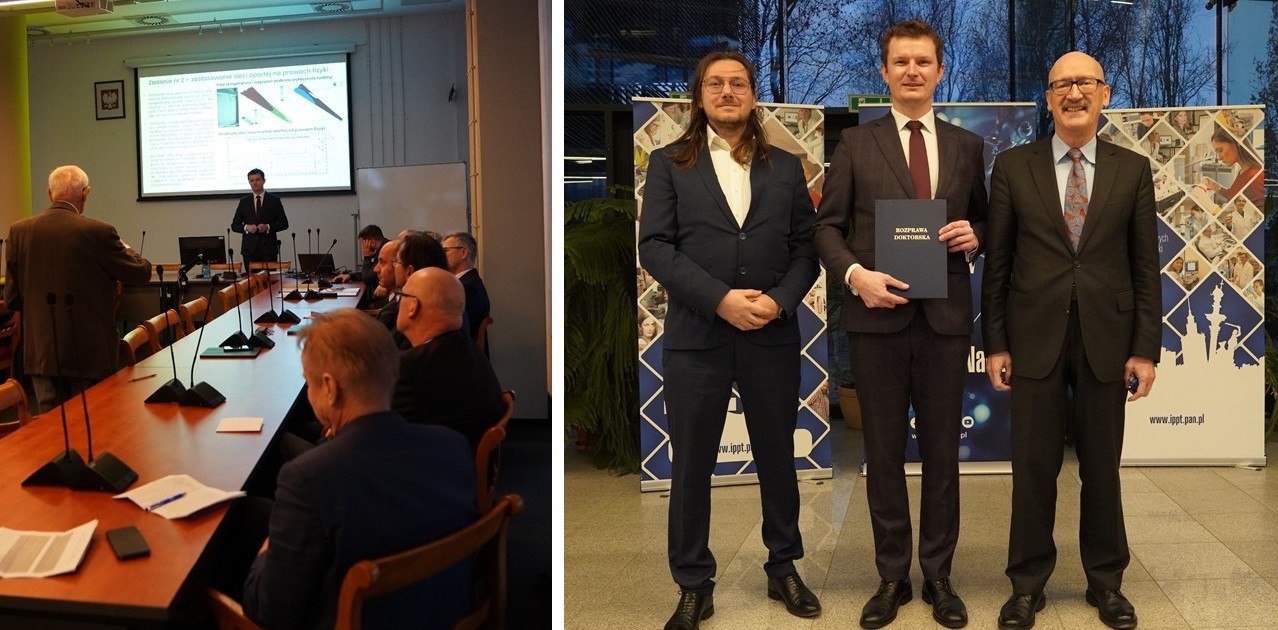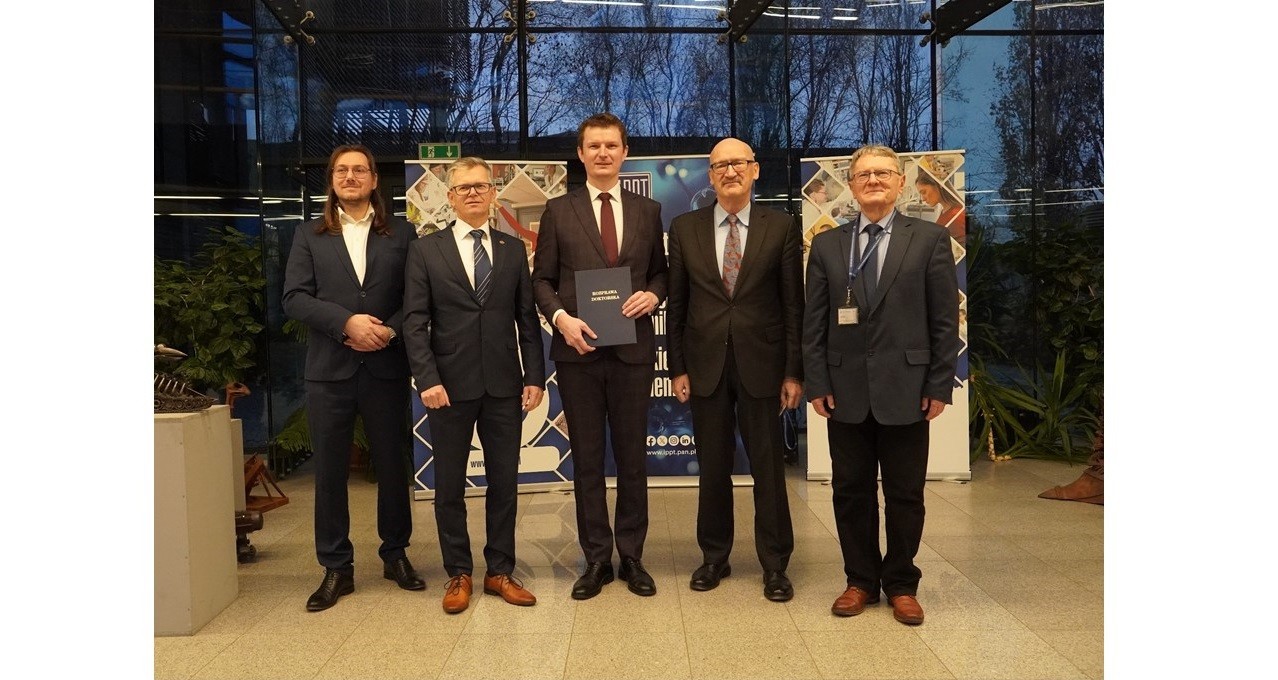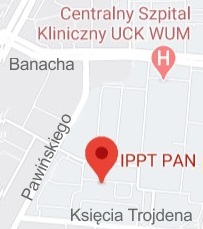On December 12, 2024, according to the resolution of the Scientific Council of IPPT PAN, Maciej Badora was awarded the degree of Doctor of Science in the field of Engineering and Technical Sciences in the discipline of Mechanical Engineering.
The doctoral dissertation is titled: „A method for predicting the size of damage to gas turbine components based on machine learning algorithms, applicable at the early stages of parts’ lifetime”.


Fig. A commemorative photo with the supervisors and reviewers of the doctoral dissertation. From left: Przemysław Bartosik, M.Sc. Eng. (BH Poland Sp. z o.o.), Assoc. Prof. Roman Starosta (Poznań University of Technology), Maciej Badora, PhD. Eng., Prof. Tomasz Szolc (IPPT PAN) and Prof. Wiesław Ostachowicz (IMP PAN).
This dissertation focuses on the problem of effectively predicting damage size to gas turbine components using machine learning algorithms when the availability of empirical data on damage size measurements is limited or the data are missing. This research addresses the problems of estimating the maximal length of fatigue cracks found on the trailing edges of high-pressure nozzles and predicting the wall thickness reduction due to the oxidation of transition pieces. The analyzed objects are the components of the turbine and combustion systems of two different heavy-duty gas turbines manufactured by Baker Hughes Company. The research objective is to formulate a method based on machine learning algorithms for predicting the damage growth that can be applied for various types of failures, regardless of the empirical data limitations, allowing to obtain estimates consistent with prior knowledge and physical laws about the analyzed phenomena.
The first stage of the research focuses on the application of popular statistical learning algorithms to the problem of fatigue crack propagation using a sample comprising 25 damage size measurements. A custom cost function and a controlled approach to preparing the training, test and validation sets are applied. The final predictions based on actual operational data can be accurate despite the limited sample size. In the following research stage, physics-informed neural networks are applied to the same technical problem to build predictive models with better generalization and extrapolation capabilities and obtain estimates consistent with the relevant equations describing crack growth due to low cycle fatigue. A recurrent neural network with an embedded multilayer perceptron is trained using a dynamically changing custom cost function, which coefficients depend on the consistency with the underlying physical laws. The obtained predictions are accurate regardless of training based on ten, two, or only one observation. A normalized error evaluated against unseen data and characteristics of the perceptron were used to evaluate the predictions’ credibility. The novel method of single-source domain generalization and cross-domain knowledge transfer in regression analysis based on physics-informed neural networks is proposed. It enables the effective application of an unchanged cumulative damage model built using a physics-informed neural network, which was trained in a domain where measurement data on damage size are available in domains, where such data are unavailable. The procedure consists of eight steps, but the so-called shifting of the operational data and neural network’s inputs is essential. It is applied to predict fatigue crack growth in a simulated scenario where damage size measurements are unavailable. The final predictions are similar to those obtained using a predictive model trained from the ground up in the target domain. In the last research stage, physics-informed neural networks and the proposed method are applied to estimate the metal loss due to oxidation. The obtained results are satisfactory and provide evidence that this method has a universal character.
The main novelty of this research is the method of single-source domain generalization and cross-domain knowledge transfer based on physics-informed neural networks. It allows for predicting the size of damage to gas turbine parts in domains without any measurements, applying appropriately a physics-informed neural network trained in a source domain where damage size measurements are available. It is intended to make predictions for fielded products, but it can also provide valuable outcomes to support the design phase, combining knowledge extracted from historical empirical data and numerical simulation results.















